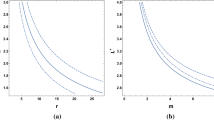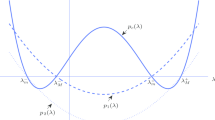Abstract
Population persistence and spatial propagation and their dependence on demography and dispersal are of great importance in spatial ecology. Many species with highly structured life cycles invade new habitats through the dispersal of organisms in their early life stages (e.g., seeds, larvae, etc.). We develop a stage-structured continuous/discrete-time hybrid model to describe the spatiotemporal dynamics of such species, in which a reaction-diffusion equation describes the random movement of dispersing individuals, while two difference equations describe the demography of sedentary individuals. We obtain a formula for the spreading speed of the population in terms of model parameters. We show that the spreading speed can be characterized as the slowest wave speed of a class of traveling wave solutions. We provide an explicit formula for the critical domain size that separates population persistence from extinction. By comparing our stage-structured model with a physically unstructured model, we find that the structured model reduces to the unstructured one in some special cases. Accordingly, the results about the spreading speed and the critical domain size for the unstructured model represent some special cases of those for the structured one. This highlights the significance of including stage structure in studying the spatial dynamics of species with complex life cycles.





Similar content being viewed by others
References
Alqawasmeh Y, Lutscher F (2019) Persistence and spread of stage-structured populations in heterogeneous landscapes. J Math Biol 78:1485–1527
Casewell H (2001) Matrix population models: construction, analysis, and interpretation. Sinauer Associates Inc, Sunderland
Cantrell RS, Cosner C (2003) Spatial ecology via reaction-diffusion equation. Wiley, New York
Cantrell RS, Cosner C, Martínez S (2020) Persistence for a two-stage reaction-diffusion system. Mathematics 8:396
Cushing JM (1998) An introduction to structured population dynamics. SIAM, Bangkok
Eskola HTM, Geritz SAH (2007) On the mechanistic derivation of various discrete-time population models. Bull Math Biol 69:329–346
Fazly M, Lewis MA, Wang H (2017) On impulsive reaction-diffusion models in higher dimensions. SIAM J Appl Math 77:224–246
Fisher RA (1937) The wave of advantageous genes. Ann Eugen 7:355–369
Fusi L, Primicerio M, Yagi A (2016) A mathematical model for forest growth dynamics. J Math Anal Appl 440:773–793
Grigorovich IA, Angradi TR, Stepien CA (2008) Occurrence of the quagga mussel (Dreissena bugensis) and the zebra mussel (Dreissena polymorpha) in the upper Mississippi River system. J Freshw Ecol 23:429–435
Gurtin ME, MacCamy RC (1981) Diffusion models for age-structured populations. Math Biosci 54:49–59
Gyllenberg M, Hanski I, Lindström T (1997) Continuous versus discrete single species populations models with adjustable reproductive strategies. Bull Math Biol 59:679–705
Hernandez GE (1988) Dynamics of populations with age-difference and diffusion: localization. Appl Anal 29:143–163
Hsu SB, Zhao X-Q (2008) Spreading speeds and traveling waves for nonmonotone integrodifference equations. SIAM J Math Anal 40:776–789
Huang Q, Jin Y, Lewis MA (2016) \(R_0\) analysis of a benthic-drift model for a stream population. SIAM J Appl Dyn Syst 15:287–321
Huang Q, Wang H, Ricciardi A, Lewis MA (2016) Temperature- and turbidity-dependent competitive interactions between invasive freshwater mussels. Bull Math Biol 78:353–380
Huang Q, Wang H, Lewis MA (2017) A hybrid continuous/discrete-time model for invasion dynamics of zebra mussels in rivers. SIAM J Appl Math 77:854–880
Huang Q, Zhang Y (2021) Spread rates of a juvenile-adult population in constant and temporally variable environments. Theor Ecol 14:145–160
Jin W, Smith HL, Thieme HR (2016) Persistence and critical domain size for diffusing populations with two sexes and short reproductive season. J Dyn Differ Equ 28:689–705
Johnson AE, Ricciardi A, Carlton JT (2001) Overland dispersal of aquatic invasive species: a risk assessment of transient recreational boating. Ecol Appl 11:1789–1799
Karatayev AY, Burlakova LE, Padilla DK (2015) Zebra versus quagga mussels: a review of their spread, population dynamics, and ecosystem impacts. Hydrobiologia 746:97–112
Kuznetsov YA, Antonovsky MY, Biktashev VN, Aponina EA (1994) A cross-diffusion model of forest boundary dynamics. J Math Biol 32:219–232
Lewis MA, Kareiva P (1993) Allee dynamics and the spread of invading organisms. Theor Popul Biol 43:141–158
Lewis MA, Li B (2012) Spreading speed, traveling waves, and minimal domain size in impulsive reaction-diffusion models. Bull Math Biol 74:2383–2402
Lewis MA, Schmitz G (1996) Biological invasion of an organism with separate mobile and stationary states: modeling and analysis. Forma 11:1–25
Li B, Lewis MA, Weinberger HF (2009) Existence of traveling waves for integral recursions with nonmonotone growth functions. J Math Biol 58:323–338
Liang X, Zhao X-Q (2010) Spreading speeds and traveling waves for abstract monostable evolution systems. J Funct Anal 259:857–903
Lui R (1989) Biological growth and spread modeled by systems of recursions I: mathematical theory. Math Biosci 93:269–295
Lutscher F (2019) Integrodifference equations in spatial ecology. Interdisciplinary applied mathematics, vol 49. Springer, Berlin
Lutscher F, Lewis MA, McCauley E (2006) Effects of heterogeneity on spread and persistence in rivers. Bull Math Biol 68:2129–2160
Lewis MA, Li B, Weinberger HF (2002) Spreading speed and linear determinacy for two-species competition models. J Math Biol 45:219–233
Martin JRH (1976) Nonlinear operators and differential equations in Banach spaces. Wiley, New Jersey
Metz JAJ, Diekmann O (1986) The dynamics of physiologically structured populations. Lecture notes in biomathematics, vol 68. Springer, Berlin
Murray JD (2002) Mathematical biology I: an introduction. Springer, Berlin
Murray JD (2002) Mathematical biology II: spatial models and biomedical applications. Springer, Berlin
Neubert MG, Caswell H (2000) Demography and dispersal: calculation and sensitivity analysis of invasion speed for structured populations. Ecology 81:1613–1628
Nussbaum RD (1969) The fixed point index and asymptotic fixed point theorems for k-set-contractions. Bull Am Math Soc 75:490–495
Okubo A, Levin S (2001) Diffusion and ecological problems. Springer, New York
Pachepsky E, Lutscher F, Nisbet RM, Lewis MA (2005) Persistence, spread and the drift paradox. Theor Popul Biol 67:61–73
Pachepsky E, Nisbet RM, Murdoch WW (2008) Between discrete and continuous: consumer-resource dynamics with synchronized reproduction. Ecology 89:280–288
Shigesada N, Kawasaki K (1997) Biological invasions: theory and practice. Oxford University Press, Oxford
Skellam JG (1951) Random dispersal in theoretical populations. Biometrika 38:196–218
Thieme HR (1979) Density-dependent regulation of spatially distributed populations and their asymptotic speed of spread. J Math Biol 8:173–187
Vasilyeva O, Lutscher F, Lewis MA (2016) Analysis of spread and persistence for stream insects with winged adult stages. J Math Biol 72:851–875
Webb GF (1985) Theory of nonlinear age-dependent population dynamics, New York
Weinberger HF (1982) Long-time behavior of a class of biological models. SIAM J Math Anal 13:353–396
Weinberger HF, Lewis MA, Li B (2002) Analysis of linear determinacy for spread in cooperative models. J Math Biol 45:183–218
Wu R, Zhao X-Q (2019) Spatial invasion of a birth pulse population with nonlocal dispersal. SIAM J Appl Math 79:1075–1097
Acknowledgements
We thank Yu Jin (University of Nebraska-Lincoln) for helpful discussions. We are grateful to the anonymous referees for many insightful comments and suggestions that helped improve the paper.
Author information
Authors and Affiliations
Corresponding author
Additional information
Publisher's Note
Springer Nature remains neutral with regard to jurisdictional claims in published maps and institutional affiliations.
The research of this author was partially supported by the National Natural Science Foundation of China (Nos. 11701415 and 11801400). The research of this author was partially supported by the National Natural Science Foundation of China (No. 11871060), the Venture and Innovation Support Program for Chongqing Overseas Returnees (No. 7820100158).
Rights and permissions
Springer Nature or its licensor holds exclusive rights to this article under a publishing agreement with the author(s) or other rightsholder(s); author self-archiving of the accepted manuscript version of this article is solely governed by the terms of such publishing agreement and applicable law.
About this article
Cite this article
Wang, M., Zhang, Y. & Huang, Q. A Stage-Structured Continuous-/Discrete-Time Population Model: Persistence and Spatial Spread. Bull Math Biol 84, 135 (2022). https://doi.org/10.1007/s11538-022-01090-8
Received:
Accepted:
Published:
DOI: https://doi.org/10.1007/s11538-022-01090-8




